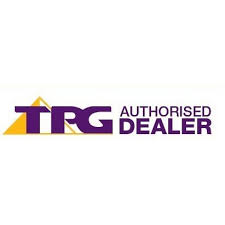The rapid progression in technology, globalisation, and the rise of consumer connectedness are dramatically transforming the environment we live in. With this new environment, many traditional retailers have been unable to adapt. Technology is changing the way brand experiences are being delivered. Digital branding creates brand images and messages to communicate with consumers online. In order to keep up with the change, businesses must adjust and constantly engage with their audience to keep afloat.
Digital branding has been derived from branding. From the early 20th century, branding was simply a name and logo of a company; however, by the late 20th century, branding has become a more abstract concept. Branding is now about the impression that people (customers, potential customers, competitors- anyone who can interact with your company) have of your company formed by past experiences and images. It is the process of creating a unique name and image for a company in the consumer’s mind, predominantly through advertising. Digital branding has replaced traditional media with activities online.
Many traditional retailers are under threat due to the high commodity of products, difficulty in price differentiation, and the increase of consumer choice through globalisation. Consumers are now demanding more at every stage of their brand relationships, and with the hundreds and thousands of choices out on the market, consumers not only have the choice of local retailers, but have the web to search for what they are looking for at competitive prices. In Australia, as well as many other countries, online shopping has significantly increased over the several years and the popularity of bargain hunting is on the rise. When you have the option of choosing a cheaper product online, why would you go in store for the same product at a higher price? Nowadays everyone wants to get value for money without having to compromise quality.
The way we shop as consumers has altered over time and in the future, shopping will look different to how it is today. As consumer behaviour is continually changing, the way we deliver our brand experiences must also change. Consumer behaviour will continue to adapt to a seamless digital future. We have to adjust our ways to keep up with the ever changing and constant demands of customers. Currently, most retailers build experiences around individual moments where customers browse, purchase and receive their products or services. Customers now demand more than just the product or service itself. They want a positive experience where their needs are prioritised and catered to. Consumers expect better service especially when it comes to purchasing across different devices. Apart from excellent service, retailers will need to provide a cohesive and coherent experience to maintain and enhance customer relationships. Not only can we purchase a product or service on our computer screens, but our mobile phones makes online shopping convenient and accessible.
In the digital world, there are endless amounts of websites offering their products and services in the market. E-commerce websites constantly compete for customers’ attention and must innovatively and actively engage with the wider market to enhance customer experience. It can be difficult to convey your brand and stand out among a sea of competitors. Creating and having a great website is one thing, but being able to proactively engage with your customers is another. Your online presence should be a representation of your brand’s story and experience. To make your brand a success online, there are essential factors to take into consideration.
Consistency Is Key
When promoting your brand both offline and online, it is important to note that having consistency on both settings creates a strong brand presence in the minds of consumers. When it comes to making your brand work, having a consistent tone across every aspect of your business will allow your customers to more easily identify and relate to your brand. It may be common sense to have both your offline and online brand in sync, but some business overlook this step. When your offline brand is fun and vibrant, while your online brand is dull and minimalist, the two different experiences contradict each other. This leaves consumers with an odd disconnect between the two different brand experiences. Whether users are interacting with your brand in store, on your website, or on any of your social media platforms, they should have the same type of response.
Taking the same tone and level of detail across the scope of your brand offline and digitally will enable your business’ image to solidify the perception of your brand. Having a particular type of aesthetic and ambience that your offline brand emits and transferring that same ambience to your digital brand will create the same experience to your users. Creating that consistent and common thread between each brand interaction will more effectively engage consumers and enrich their online experience.
Tell A Story Through Experience
Branding has moved on from consumers simply being aware of your company. With many ecommerce businesses forming relationships with customers online, branding now is more about the interactions and experiences a user has with your brand. A consumer chooses to emotionally invest their time and effort with the story you are telling through your brand. When we interact with a brand, we can relate to the story conveyed and our experience is heightened. We as consumers want to be engaged and will interact with brands that have useful content that sparks our interests. Not only does your brand have to actively communicate with users, but your website has to be designed to convey your brand’s personality. By doing so, this will catch your target audience’s attention and provoke the emotions you want your users to feel. Designing your website in line with your brand’s ambience and personality will effectively portray your brand’s story, further emphasising on the consistency of your brand across every touch point.
Using social media as a tool to engage and interact with consumers can help your brand convey its story and message. Social media has many platforms that you can use to share content with your customers and the wider market. Across all types of social media networks, your brand can easily share blogs, product and service updates and improvements and any other type of content within a matter of seconds. Not only is social media a cost effective tool to communicate with users, but it has a large reach where users can share and repost your content to those who may not be familiar with your brand.
Optimising To Different Devices
Nowadays almost everyone uses their mobile phone to surf the web. It is convenient and easy to use when we are on the go. However, when websites are not compatible with devices other than a desktop computer or laptop, it can be frustrating for the user. Factors such as long loading time, pages that do not adjust to the screen size can result in your website’s high bounce rate. For brands, they have the freedom and flexibility in the digital space. Your brand can adapt across different access points online. Having your website compatible for a variety of devices allows your brand to completely be optimised in the space it’s in. This way, you are able to choose different elements, such as the layout or size for your brand, and it will become more distinct and recognisable among users. Taking a flexible and adaptive approach to branding across a variety of elements further emphasises your brand. Additionally, this increases consumers’ awareness with your brand and further enhancing their experience with it.
Often when optimising a website to be compatible with different devices, we tend to stick to the same design across devices. In order to fully engage your users, it is important to note that different devices have different advantages and limitations. Therefore, it is ideal to design and create content to match to the specific device to boost the user’s experience. This reiterates the need to taking a flexible and adaptive approach when it comes to digital branding.
Keep It Simple
Although, you may be carried away and feel the need to add every function to your website and share every type of content across all devices and other online mediums (such as social media), it is good to keep things simple. A website with too many functions can become complicated and overwhelming for the user. Focusing on what your target audience needs by tailoring your digital branding experience is a great place to start. You don’t want to over provide your users with excessive amounts of information. Creating a simple yet direct website with a single message can just be as powerful.
By simply providing consumers with something useful, you can draw more users into your brand. If you provide your product or service at a time of need, it can create a very strong connection with your user. Utilising the full potential of the digital space to engage with your users can attract a greater audience with the information and content you have shared. We all know that word of mouth is powerful and can create buzz. By providing something to your users at a time of need, they will recommend your brand to others. Positive word of mouth will further increase your brand’s awareness.
In essence, there are many ways that the digital space can be used to your advantage. By capitalising on these advantages and benefits, you can create a deeper and more engaging digital brand experience for users. With the constant advancements in technology, digital branding will continuously become an integral part of the success of branding.















